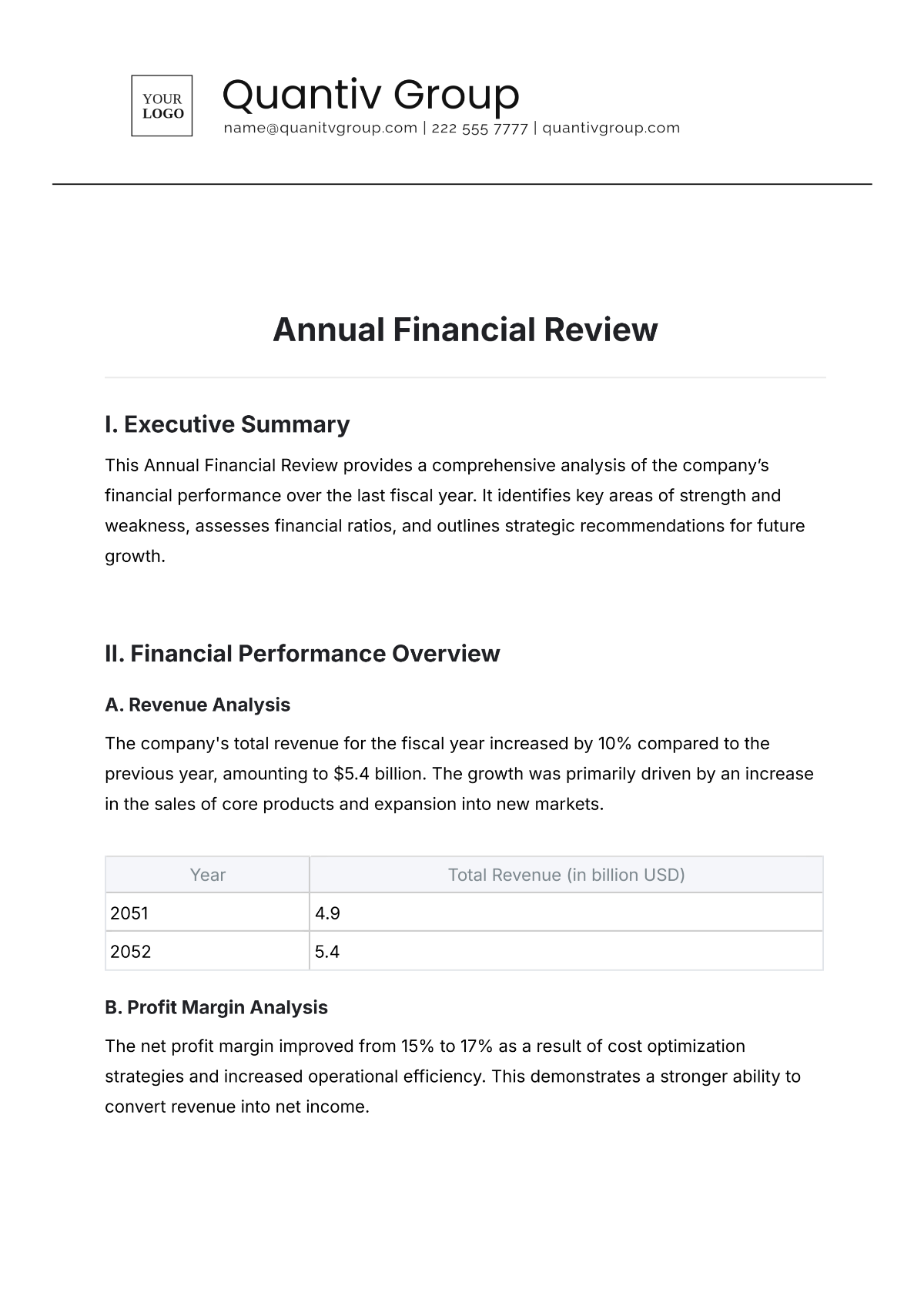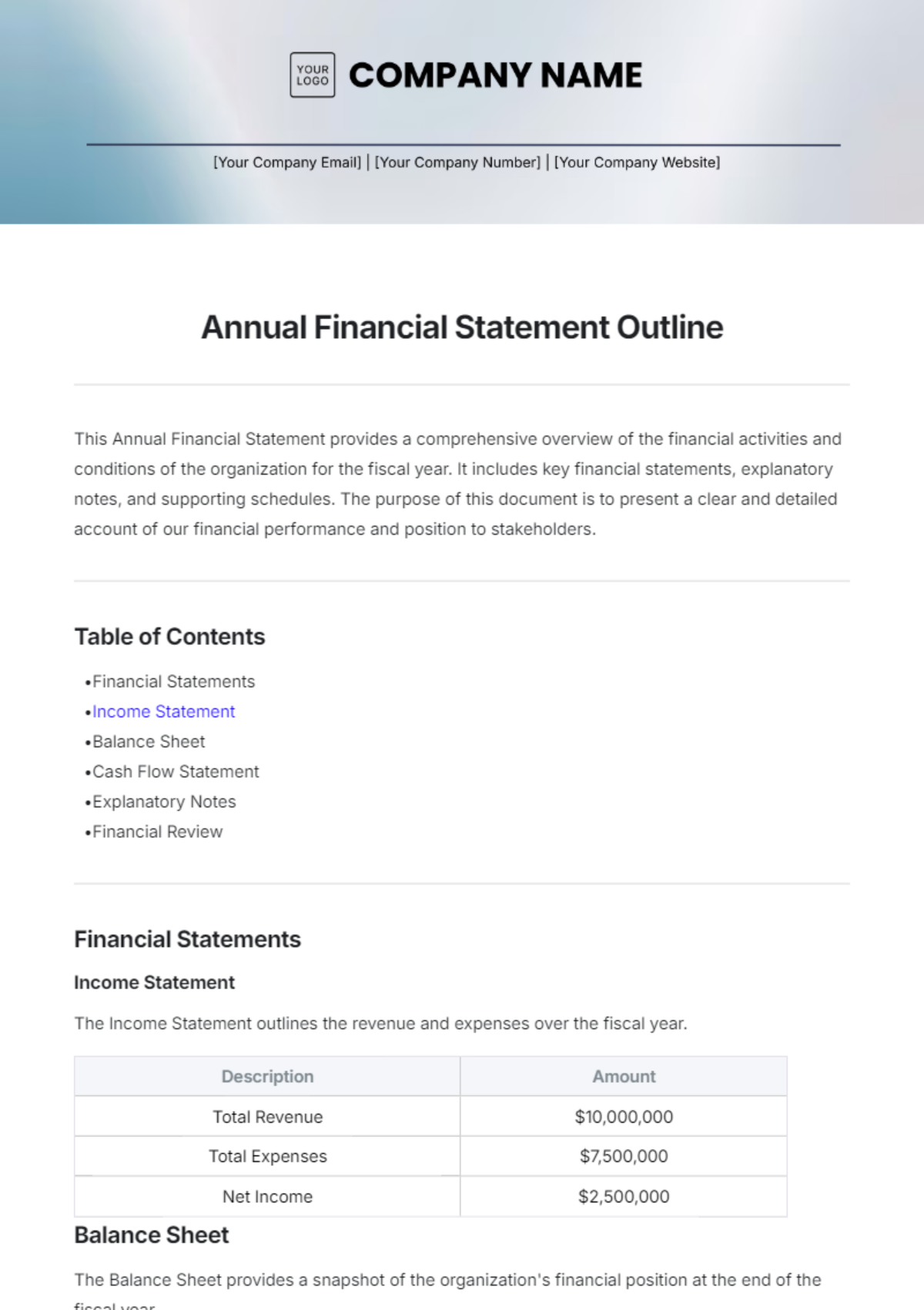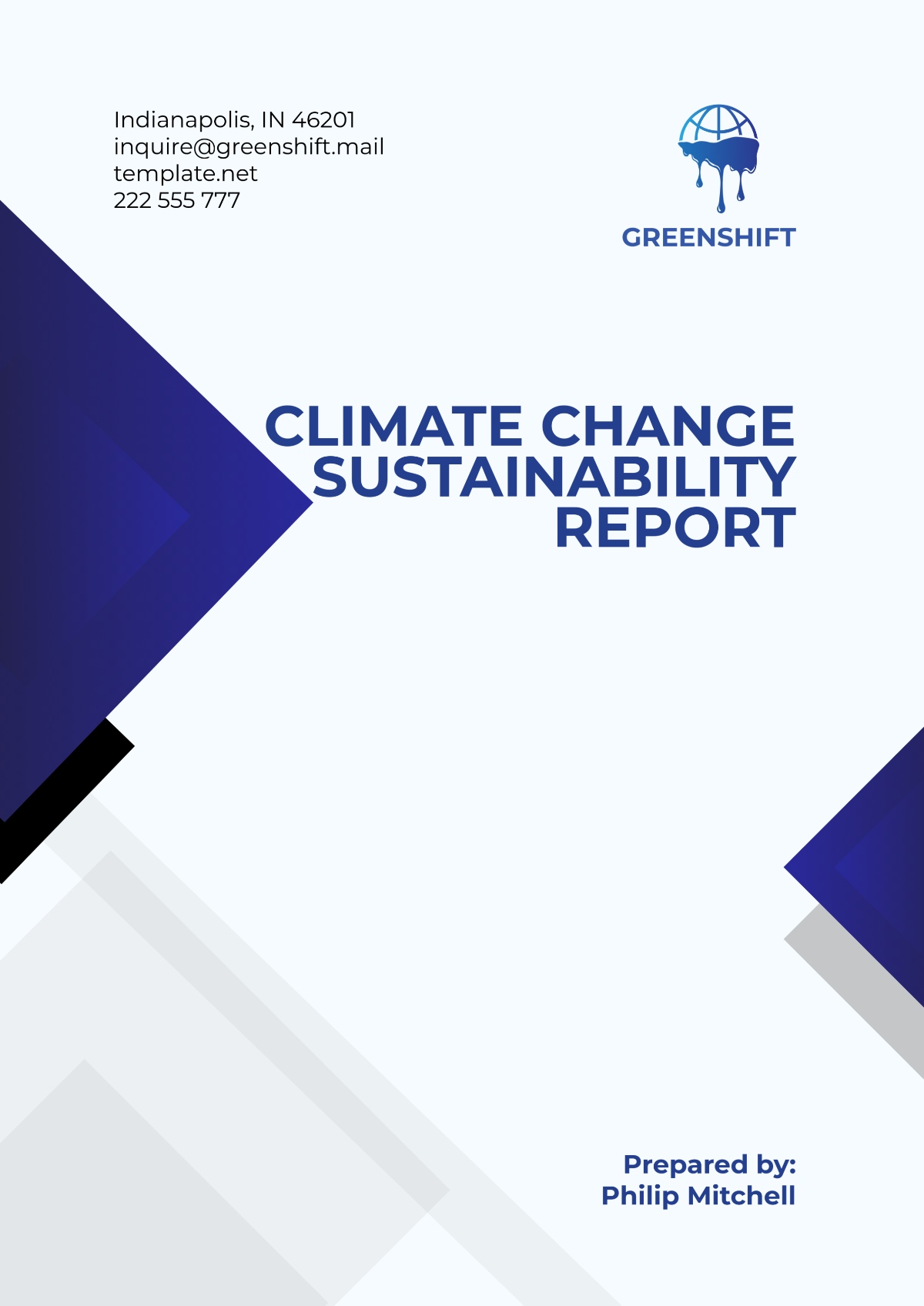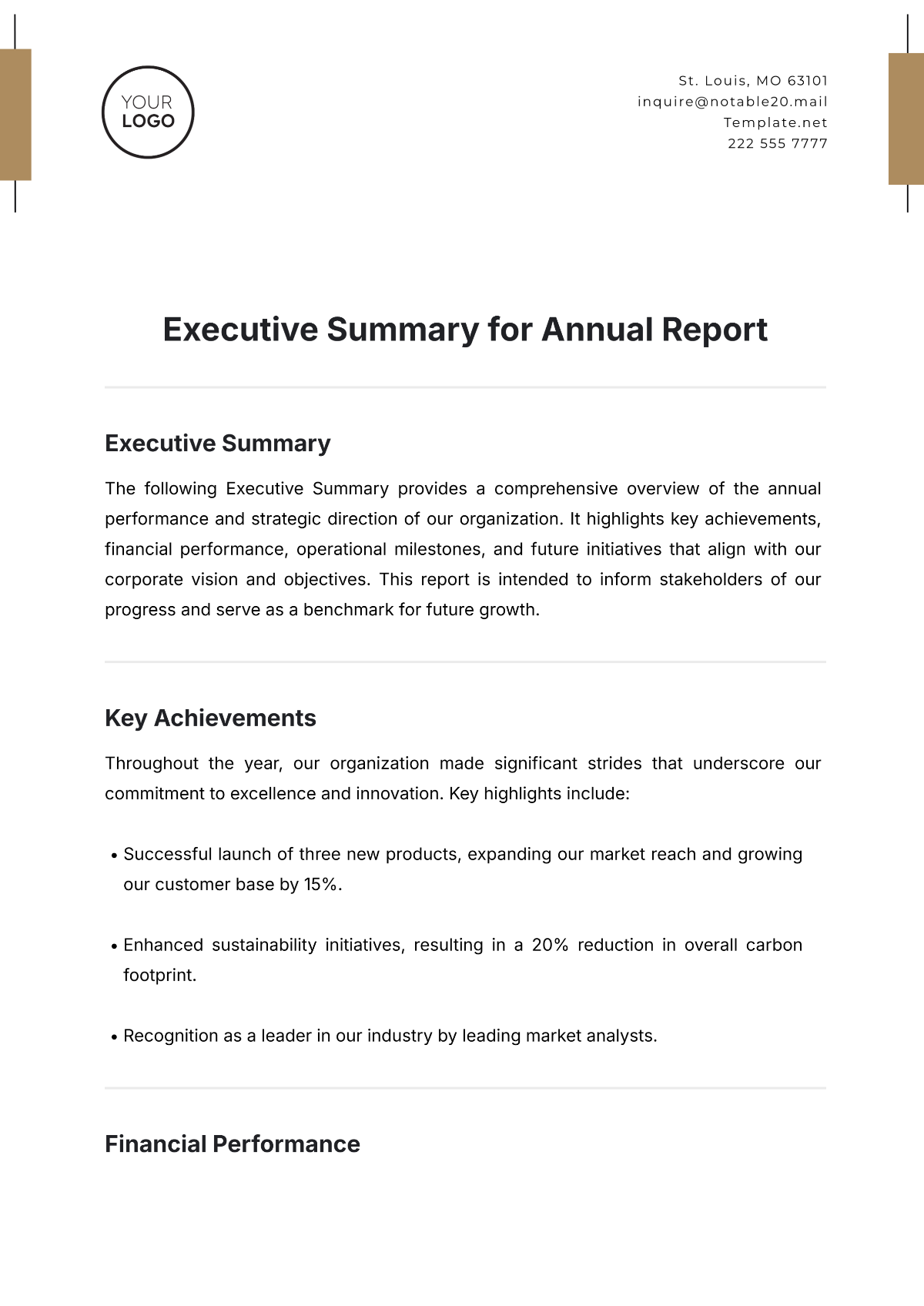Agriculture Energy Usage Report
I. Executive Summary
This report, prepared by [Your Company Name], provides an in-depth analysis of energy usage in the agricultural sector. The focus is on identifying current consumption patterns, evaluating energy sources, and recommending energy efficiency improvements. By examining case studies and assessing both environmental and economic impacts, this report aims to offer actionable insights to stakeholders in the agriculture industry.
Agriculture is a vital sector that supports the livelihood of billions of people worldwide. However, the energy demands of modern agricultural practices are substantial and growing. Understanding and optimizing energy usage is crucial for ensuring the sustainability and profitability of the agricultural sector. This report outlines the current state of energy consumption, highlights best practices, and proposes strategies for enhancing energy efficiency. Through detailed analysis and real-world examples, we provide a comprehensive overview of the opportunities and challenges in agricultural energy management.
II. Introduction
Energy is a critical component of modern agriculture, powering everything from irrigation systems to machinery and transportation. The rising cost of energy and growing concerns about environmental sustainability make it imperative to understand and optimize energy usage in agriculture. This report explores various dimensions of energy consumption in agriculture, shedding light on areas for potential savings and efficiency enhancements.
The agricultural sector is one of the largest consumers of energy, with significant impacts on both the environment and the economy. The need for efficient energy use has never been more pressing, given the increasing global population and the demand for food. This report aims to provide a detailed understanding of how energy is used in agriculture, the sources of this energy, and the practices that can lead to more efficient energy use. By doing so, we hope to contribute to the development of a more sustainable agricultural industry.
III. Energy Usage Overview
A. Energy Consumption by Sector
The agricultural sector consumes a significant amount of energy, primarily through:
Irrigation Systems: Pumps and motors used for irrigation consume around 25% of the total energy in agriculture. Efficient water management is critical for crop production, especially in regions with limited water resources. Advanced irrigation techniques, such as drip and sprinkler systems, can significantly reduce energy consumption compared to traditional flood irrigation methods.
Machinery: Tractors, combines, and other machinery account for approximately 30% of energy use. These machines are essential for various agricultural operations, including planting, harvesting, and soil preparation. The energy efficiency of machinery has improved over the years, but there is still considerable room for improvement through the adoption of modern, fuel-efficient equipment and regular maintenance practices.
Transportation: The transportation of goods, including fuel for trucks and other vehicles, makes up 20% of energy consumption. The agricultural supply chain involves transporting raw materials, processed products, and inputs, which requires substantial energy. Optimizing logistics, improving vehicle fuel efficiency, and shifting to alternative fuels can help reduce energy use in this sector.
Heating and Cooling: Greenhouses and storage facilities require substantial energy for heating and cooling, representing about 15% of total energy use. Controlled environment agriculture, such as greenhouse farming, relies heavily on energy for temperature regulation, lighting, and ventilation. Implementing energy-efficient technologies and insulation can lower energy consumption in these facilities.
Miscellaneous: Lighting, processing equipment, and other miscellaneous uses constitute the remaining 10%. These include energy used in on-farm processing, packaging, and other support operations. Even small improvements in energy efficiency in these areas can contribute to overall energy savings.
B. Energy Sources
Agricultural energy sources include:
Fossil Fuels: Diesel, gasoline, and natural gas are the primary fossil fuels used, comprising 60% of energy consumption. These fuels are widely used due to their high energy density and ease of transport. However, their use contributes to greenhouse gas emissions and environmental pollution. Transitioning to cleaner energy sources is a significant challenge for the agriculture sector.
Electricity: Used extensively in irrigation, processing, and storage, accounting for 30% of energy use. Electricity powers a wide range of agricultural equipment and facilities. The increasing availability of renewable electricity sources presents an opportunity to reduce the carbon footprint of agricultural operations.
Renewable Energy: Solar, wind, and biomass contribute to about 10% of the energy mix, with solar being the most prevalent among renewables. Renewable energy technologies are becoming more affordable and accessible, offering farmers viable alternatives to traditional energy sources. Investing in renewable energy can provide long-term cost savings and reduce dependency on fossil fuels.
IV. Energy Efficiency Practices
A. Current Practices
Current energy efficiency practices in agriculture include:
Precision Agriculture: Utilizing GPS and data analytics to optimize planting, watering, and harvesting, reducing energy waste. Precision agriculture involves the use of technology to make farming more efficient and sustainable. By collecting and analyzing data on soil conditions, weather patterns, and crop health, farmers can make informed decisions that minimize energy use and maximize productivity.
Energy-Efficient Equipment: Adoption of machinery with higher fuel efficiency and electric motors with lower power consumption. Modern agricultural equipment is designed to be more energy-efficient, reducing fuel consumption and operating costs. Regular maintenance and timely upgrades to newer models can further enhance energy efficiency.
Irrigation Management: Implementing drip irrigation and automated systems to minimize water and energy use. Efficient irrigation practices not only conserve water but also reduce the energy required for pumping and distributing water. Automated irrigation systems can be programmed to deliver precise amounts of water based on crop needs, soil conditions, and weather forecasts.
Renewable Energy Integration: Increasing use of solar panels and wind turbines on farms to supplement energy needs. Many farmers are installing renewable energy systems to generate electricity for on-farm use. Solar panels can be installed on rooftops or open fields, while wind turbines can be placed in windy areas to harness wind energy. These systems can reduce energy costs and provide a sustainable energy source.
B. Recommendations for Improvement
To further enhance energy efficiency, the following recommendations are proposed:
Adoption of Smart Technologies: Implementing IoT devices and AI for real-time monitoring and management of energy use. Smart technologies can provide farmers with detailed insights into their energy consumption patterns, enabling them to identify inefficiencies and take corrective actions. For example, sensors can monitor soil moisture levels and automatically adjust irrigation schedules to optimize water and energy use.
Upgrading Infrastructure: Investing in modern, energy-efficient infrastructure such as LED lighting and high-efficiency HVAC systems. Upgrading to energy-efficient lighting and heating, ventilation, and air conditioning (HVAC) systems can significantly reduce energy consumption in agricultural facilities. These upgrades can also improve the working conditions for farmworkers and enhance the quality of stored products.
Training and Education: Providing farmers with training on best practices for energy management and conservation. Education and training programs can help farmers understand the importance of energy efficiency and adopt best practices. Workshops, seminars, and online resources can provide valuable information on energy-saving techniques and technologies.
Government Incentives: Leveraging government programs and subsidies to support the adoption of renewable energy and energy-efficient technologies. Many governments offer incentives, such as grants, tax credits, and low-interest loans, to encourage farmers to invest in energy-efficient and renewable energy technologies. These incentives can help offset the initial costs and make it more affordable for farmers to implement energy-saving measures.
V. Case Studies
A. High-Efficiency Farms
1. Example Farm A
Example Farm A implemented a comprehensive energy management system that reduced energy consumption by 20%. Key strategies included the use of solar panels, energy-efficient irrigation pumps, and advanced machinery. By investing in renewable energy sources and upgrading their equipment, the farm was able to significantly lower its energy costs and reduce its carbon footprint. The farm also adopted precision agriculture techniques, using data analytics to optimize planting and irrigation schedules. As a result, Example Farm A not only achieved energy savings but also improved crop yields and overall farm productivity.
2. Example Farm B
Example Farm B focused on precision agriculture, utilizing drones and sensors to optimize water and fertilizer use, resulting in a 15% reduction in energy usage. The farm deployed a network of soil moisture sensors to monitor irrigation needs in real-time, allowing for precise and efficient water application. Additionally, drones were used to survey the fields and identify areas that required attention, reducing the need for manual labor and machinery use. By embracing technology and data-driven decision-making, Example Farm B was able to enhance its energy efficiency and achieve better resource management.
B. Innovative Energy Solutions
1. Solar-Powered Greenhouses
Solar-powered greenhouses harness solar energy for heating and electricity, reducing reliance on fossil fuels and cutting energy costs by 30%. These greenhouses are equipped with solar panels that capture sunlight and convert it into electricity, which is used to power lights, fans, and other essential equipment. The use of solar energy not only reduces operational costs but also minimizes the environmental impact of greenhouse farming. Solar-powered greenhouses can be particularly beneficial in regions with abundant sunlight, providing a sustainable and cost-effective solution for year-round crop production.
2. Biomass Energy Conversion
Biomass energy conversion involves using agricultural waste to produce bioenergy, providing a sustainable energy source and reducing waste disposal costs. Farms generate large amounts of organic waste, such as crop residues, manure, and food processing by-products. These materials can be converted into bioenergy through processes like anaerobic digestion and biomass gasification. By turning waste into a valuable energy resource, farms can reduce their dependence on fossil fuels and lower their waste management expenses. Additionally, the use of bioenergy can help improve soil health and fertility by returning nutrients to the soil.
VI. Impact of Energy Usage on Agriculture
A. Environmental Impact
Energy usage in agriculture has significant environmental implications:
Greenhouse Gas Emissions: Fossil fuel consumption in agriculture contributes to greenhouse gas emissions, impacting climate change. The burning of diesel, gasoline, and natural gas releases carbon dioxide and other greenhouse gases into the atmosphere. These emissions contribute to global warming and climate change, which can have severe consequences for agriculture, such as altered weather patterns, increased frequency of extreme weather events, and reduced crop yields.
Resource Depletion: Over-reliance on non-renewable energy sources depletes natural resources, necessitating a shift towards sustainable alternatives. Fossil fuels are finite resources that are becoming increasingly scarce and expensive. The depletion of these resources poses a risk to the long-term sustainability of agricultural operations. Transitioning to renewable energy sources, such as solar, wind, and biomass, can help preserve natural resources and ensure a stable energy supply for future generations.
Pollution: Energy production and consumption can lead to air and water pollution, affecting both human health and ecosystems. The combustion of fossil fuels releases pollutants, such as sulfur dioxide, nitrogen oxides, and particulate matter, which can harm air quality and contribute to respiratory illnesses. Additionally, runoff from agricultural operations can contaminate water bodies with chemicals and nutrients, leading to water pollution and ecosystem degradation. Implementing cleaner energy practices can help mitigate these environmental impacts.
B. Economic Impact
Energy costs are a substantial component of agricultural expenses:
Cost of Production: High energy prices increase the cost of production, affecting the profitability of farms. Energy is a major operating expense for farms, influencing the cost of inputs such as fuel, electricity, and fertilizers. Rising energy prices can erode profit margins and make it challenging for farmers to remain competitive. Improving energy efficiency and adopting renewable energy sources can help reduce production costs and enhance farm profitability.
Market Competitiveness: Energy efficiency can enhance competitiveness by lowering operational costs and improving sustainability credentials. Consumers and buyers are increasingly looking for sustainably produced agricultural products. Farms that adopt energy-efficient practices and reduce their carbon footprint can differentiate themselves in the market and attract environmentally conscious customers. Additionally, energy-efficient farms are better positioned to withstand fluctuations in energy prices and maintain a stable cost structure.
Government Policies: Regulations and incentives related to energy use can significantly impact the economic landscape of the agricultural sector. Government policies aimed at promoting energy efficiency and renewable energy adoption can create opportunities for farms to access financial support and resources. Incentives, such as grants, tax credits, and subsidies, can lower the barriers to implementing energy-saving measures and technologies. Conversely, regulations that impose penalties for high energy consumption or greenhouse gas emissions can increase operational costs for non-compliant farms.
VII. Conclusion
The analysis presented in this report highlights the critical role of energy in agriculture and underscores the importance of energy efficiency. By adopting advanced technologies, integrating renewable energy sources, and implementing best practices, the agricultural sector can achieve significant energy savings, reduce environmental impact, and enhance economic viability. [Your Company Name] remains committed to supporting the agricultural community in these efforts through continued research and innovation.
Efficient energy use is not only a matter of economic necessity but also an ethical responsibility towards the environment and future generations. As the global population continues to grow and the demand for food increases, the agricultural sector must embrace sustainable practices to ensure long-term food security and environmental stewardship. The insights and recommendations provided in this report aim to guide stakeholders in making informed decisions that contribute to a more sustainable and resilient agricultural industry.
VIII. Appendices
Appendix A: Energy Consumption Data
Sector | Energy Consumption (GWh) |
|---|---|
Irrigation | 1500 |
Machinery | 1800 |
Transportation | 1200 |
Heating/Cooling | 900 |
Miscellaneous | 600 |
Appendix B: Renewable Energy Integration
Renewable Source | Percentage of Total Energy Use |
|---|---|
Solar | 6% |
Wind | 3% |
Biomass | 1% |
Appendix C: Case Study Details
Case Study | Energy Reduction (%) | Key Strategies |
|---|---|---|
Farm A | 20% | Solar panels, efficient pumps, advanced machinery |
Farm B | 15% | Precision agriculture, drones, sensors |
Greenhouse | 30% | Solar energy for heating and electricity |
Biomass | - | Conversion of agricultural waste to bioenergy |
Appendix D: Environmental Impact Data
Impact | Description |
|---|---|
Greenhouse Gases | Emissions from fossil fuel use, contributing to climate change |
Resource Depletion | Overuse of non-renewable energy sources, leading to scarcity |
Pollution | Air and water pollution from energy production and consumption |
Appendix E: Economic Impact Data
Factor | Description |
|---|---|
Production Costs | High energy prices increase overall costs |
Market Competitiveness | Energy efficiency enhances competitiveness and sustainability credentials |
Government Policies | Incentives and regulations affect energy usage and economic viability |

















































